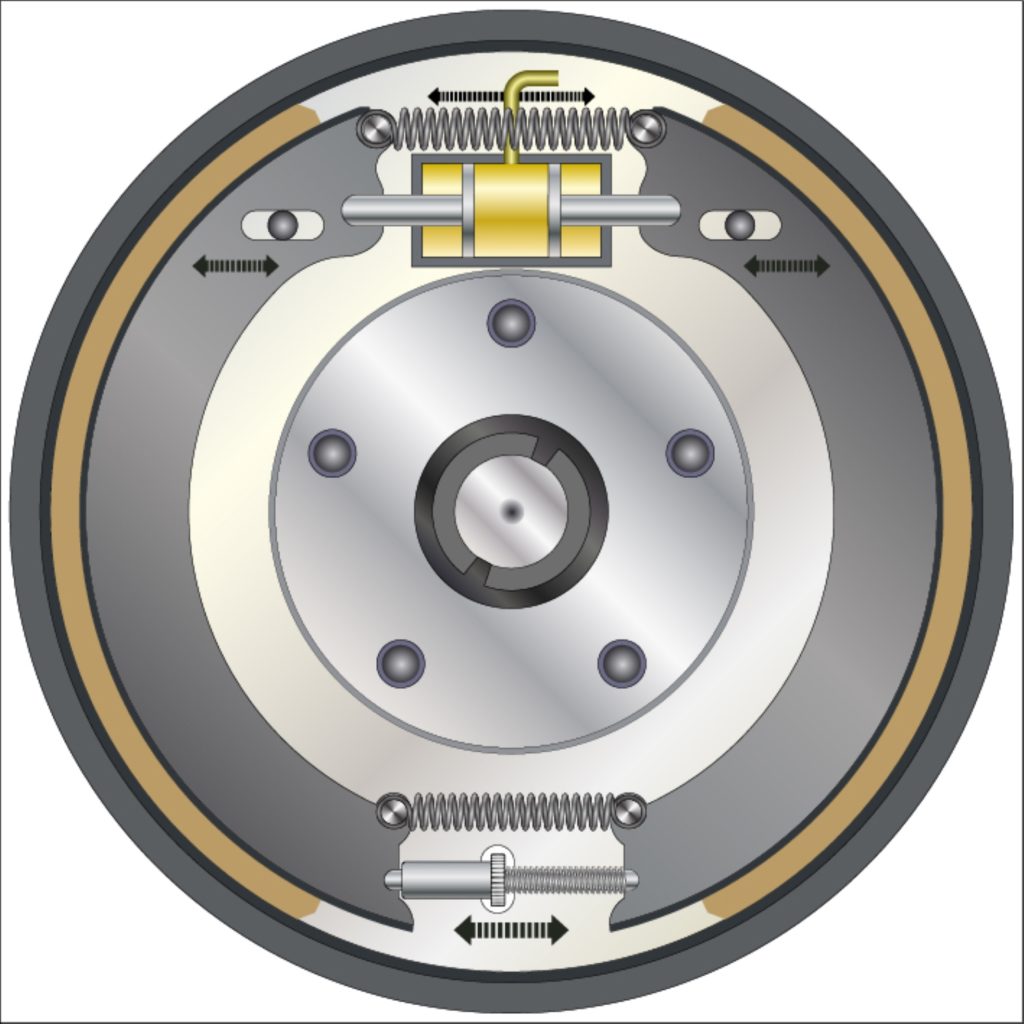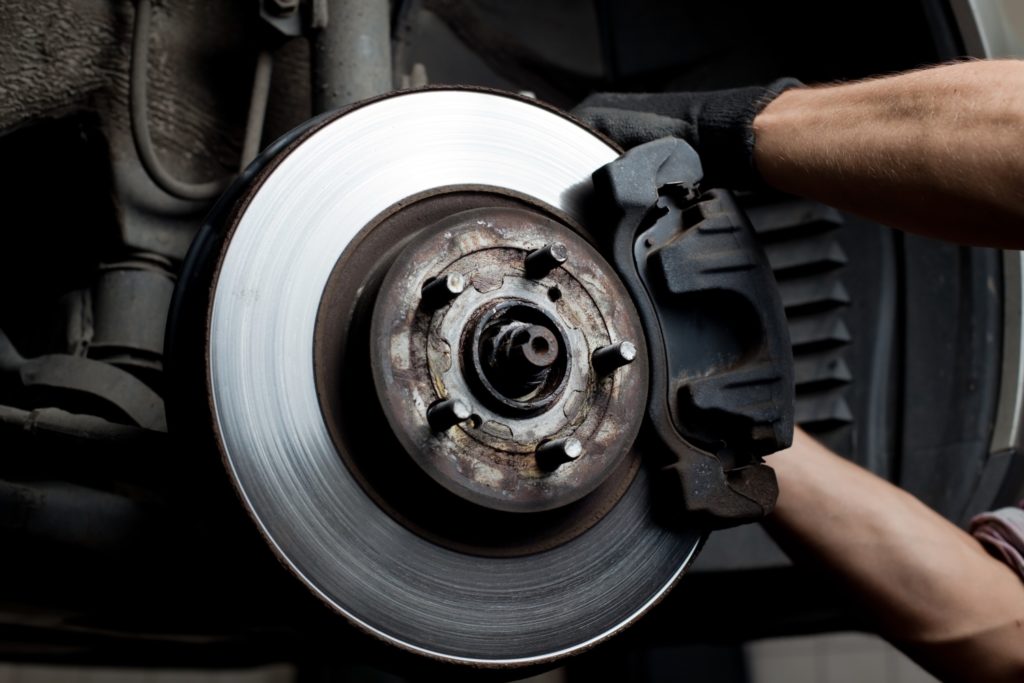Does your car have drum brakes, disc brakes—or both? If you’re like many drivers, you might not know the answer to that question. What’s more, you may not understand the difference between these two types of brakes.
But that’s okay. With a little background information, you’ll easily be able to differentiate drum brakes and disc brakes from one another.

How Do Car Brakes Work?
Before diving into the differences between disc and drum brakes, it’s important to know how a typical automotive brake system works.
When the driver presses the brake pedal, a device, called the master cylinder, sends pressurized brake fluid through a collection of lines to a caliper or wheel cylinder at each wheel. The calipers and/or wheel cylinders then activate the friction brakes to slow the wheels and bring the vehicle to a stop.

Depending on the system configuration, the friction brakes may be either disc brakes or drum brakes.

What’s the Difference Between Disc and Drum brakes?
Now you have a basic understanding of how your car’s brake system creates the friction needed to slow the wheels. Some vehicles use disc brakes to get the job done, while others use drum brakes. There are also some applications that have discs in the front and drums in the rear.
The primary difference between disc brakes and drum brakes is relatively straightforward. Disc brakes create friction with a disc-shaped rotor and a pair of brake pads, whereas drum brakes use a circular drum and brake shoes.
Of course, there’s a bit more to it than that. Each brake drum or disc brake assembly contains a unique collection of parts that work together to stop the vehicle.
What are Drum Brakes and How Do They Work?
Many vehicles have a drum brake assembly behind each of the rear wheels. There are also some classic cars with drum brakes at all four corners.
Each of the circular drums fits over the top of a set of brake shoes, associated hardware, and a wheel cylinder. One of the car’s wheel and tire assemblies is held against the brake drum with a set of lug nuts.

An individual drum brake operates as follows:
- When the driver activates the brakes, fluid from the master cylinder acts on the wheel cylinder.
- The wheel cylinder then pushes the brake shoes outward against the rotating drum, creating friction.
- Because the drum is bolted to the wheel, the wheel and tire assembly starts to slow down.
- The brake hardware holds the shoes in place and maintains the correct shoe-to-drum alignment during braking.
Although some vehicles still have drum brakes in the rear, the technology is being phased out because disc brakes are far superior.
What Are Disc Brakes and How Do They Work?
All modern vehicles have a disc brake assembly behind each of the front wheels. There are also many late-model applications with disc brakes at all four corners.
Each disc brake consists of a caliper—with a set of brake pads inside—that mounts over a disc-shaped rotor. One of the car’s wheel and tire assemblies is held against the rotor with a set of lug nuts.

An individual disc brake operates as follows:
- When the driver activates the brakes, fluid from the master cylinder acts on the brake caliper.
- The caliper then squeezes the brake pads against the rotor, creating friction.
- Because the rotor is bolted to the wheel, the wheel and tire assembly starts to slow down.
Disc brakes are far less complicated than drums, making them easier to replace. Also, disc brakes weigh less and outperform drums in a variety of ways.
You can learn more about disc brakes and drum brakes by watching the following video:
Get High-Quality Replacement Brake Drums and Brake Disks
Brake drums and brake disks will eventually need replacement once they accumulate enough wear. Excessive and sharp braking will wear out the drums and disks faster, and you should consider giving your vehicle a break until you replace these degraded rotating parts. When you require high-grade replacement drum brakes and disc brakes, order them at CarParts.com.
CarParts.com eliminates the chore of guessing whether or not the replacement brake drum or brake disk fits your vehicle. We give you what you need to know about fitment, making it easier to find the brake part you need. You can search our extensive catalog of reliable parts and accessories by year, make, and model through our website’s integrated vehicle selector. Enjoy our secure ordering process, which takes only several mouse clicks or screen taps. If you live in the continental US and order before noon ET, you can expect your new brake drum or brake disk to arrive in as fast as two business days.
Don’t delay ordering replacements for your vehicle’s damaged, faulty, or worn-out brakes. View our wide selection of brake drums and brake disks at CarParts.com today.
Any information provided on this Website is for informational purposes only and is not intended to replace consultation with a professional mechanic. The accuracy and timeliness of the information may change from the time of publication.





























